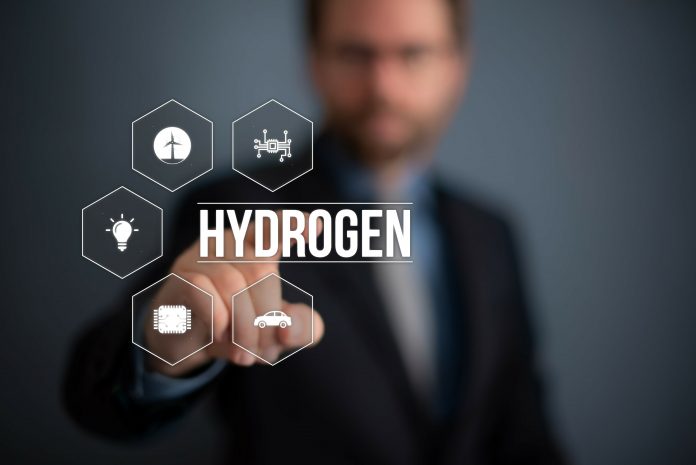
Hydrogen makes up three-quarters of the mass of the universe, making it the most abundant element. It produces only water when burned, and its uses are many and varied. It can be used to produce everything from electricity, chemicals, food, electronics to fertilizer.
There is only one hydrogen, but there are several varieties based on how it is produced.
Gray and Blue
Gray and blue hydrogen are both made with the use of fossil fuels. The Steam Methane Reform method uses the reaction of high-pressure steam and natural gas to produce hydrogen and CO2.
Blue differs from gray only because carbon capture technology is employed to prevent the CO2 from escaping and entering the atmosphere. The CO2 is then placed in underground reservoirs, reducing the footprint of the hydrogen creation.
Green
Green hydrogen is produced without emitting any greenhouse gases. Its most common method of production is electrolysis. This method splits water into hydrogen and oxygen using “green” electricity – electricity produced with sun or wind power. Hydrogen produced with this method is of a higher, more pure, quality than blue or gray.
Hydrogen has long been considered a significant player in power production, but its main drawback, so far, has been primarily one of cost. However, with the use of electrolysis as a means of production, it can be produced more cost-effectively without being affected by fossil fuels’ fluctuating price.
With its increase in production, primarily overseas, it is hoped that technology will soon develop to make it useful in heavy transport, high-temperature processes and aviation. Areas that only fossil fuels have been powerful enough to handle.
Another benefit of hydron is its ability to be stored in large quantities. The main drawback of other “green” energy, such as renewables, is their lack of constancy. As is often pointed out, the sun doesn’t always shine, and the wind doesn’t always blow. Currently, coal and natural gas plants fill the gaps renewables leave in the power supply. Hopefully, hydrogen can soon help bear some of that burden.
Japan, due to the shutdown of its nuclear plants, imports the majority of its energy. But with the cost-effectiveness and storage capabilities of green hydrogen, they have begun working with it on a large scale. Earlier this year, in Fukushima, Japan opened what is thought to be the largest green hydrogen plant in the world. The hydrogen produced there will be used primarily for powering cars and buses.
With its sheer abundance and the developing cost-effectiveness, hydrogen is on track to become a much larger player in the energy sector.














